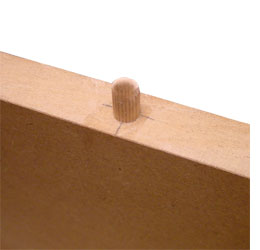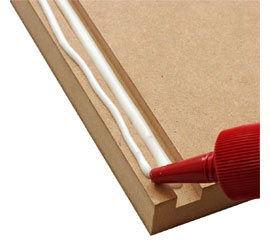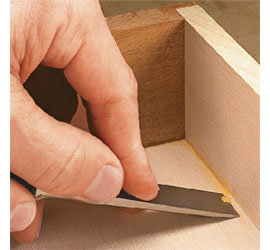How To Use Wood Glue
When too much glue is applied to joints or joined boards you end up with a mess. If not cleaned up immediately, the glue hardens and becomes difficult to remove.
A small amount of glue squeeze-out is a sign that sufficient glue was applied, but no squeeze-out means you have applied too little glue, which could result in a weak bond.
Here are a few tips to help you use wood glue properly and avoid sticky situations!
When joining boards or sections with glue always ensure that edges are clean and any old glue removed.
Where possible, clamps should be used on glued joints to ensure proper bonding.

When gluing dowel or biscuit joints, apply glue directly to the dowel or biscuit.
Use a cloth to wipe away any excess after joining.
Dowels and biscuits are designed to absorb and swell as the glue is absorbed, so too little glue will result in a failed joint.

When applying glue to a project, only apply a small bead of glue to edges.
When gluing SupaWood I prefer to apply a very thin bead and then run my finger along the glue to almost wipe it off, before applying another thin bead. Because SupaWood is absorbent, this method ensure that the glue remains on the surface.

An expired credit card makes a handy glue spreader and can be easily cleaned after use. Once wiped with the card, use a slightly damp cloth to remove any remaining wood glue.

Where glue has hardened before you have had chance to clean it away, use the sharp edge of a chisel to gently scrape off. If you leave the glue there it will spoil the finish, as glue does not accept stain and blocks the penetration of sealer.



Comments
Add comment